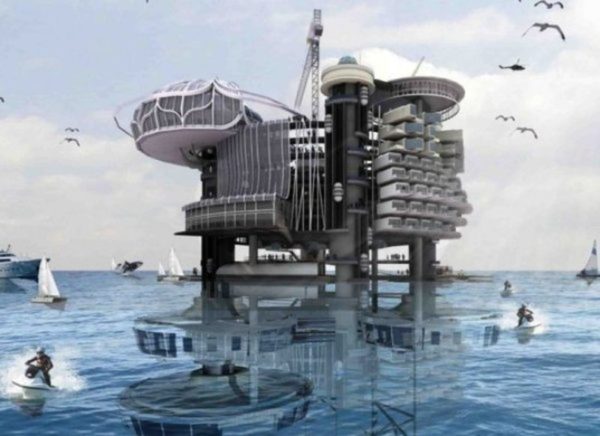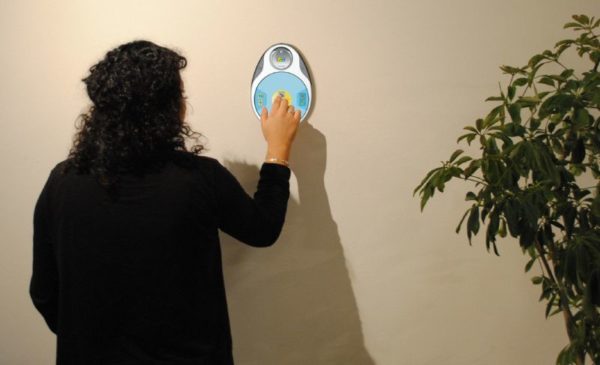Real architects don’t just think about the present, they think about the future too. An innovative design would never materialize unless it foresees the conditions of the future. Right now, sustainability seems just like a fad. However, in the distant future, it might become a necessity. Therefore, here are some innovative architectural designs that keep these problems in mind. These utilize advanced architectural concepts and things as wasteful as abandoned oil rigs to come up with absolute wonders.
Abandoned oil rigs shaped up as living hub with underwater research labs
Just as the thought of abandoned oil rigs was shaping up as a global problem, Ku Yee Kee and Hor Sue-Wern came up with an innovative proposal of transforming abandoned oil rigs situated in Malaysia into housing structures. This has come as a solution to the expensive problem of removal of oil rigs.
The abandoned oil rigs would work as living hubs for the adventurous. The plan, as the proposal details, is to have underwater labs for researchers. The list of advantages doesn’t end there, the whole structure works on renewable energy principle. In addition, the design allows for the placement of a futuristic photovoltaic panel on the roof to extract solar energy. Furthermore, wind turbines would there around the four sides. Additionally, tidal energy collectors would also be there at the bottom.
The adventure doesn’t end here though. The designers have promoted the middle level of the rig to become a recreational center. The activities include pleasure boat launch, cantilevered pool, and an assembly. The clubbed ecological and innovative solution for the major problem of abandoned oil rigs climbed the success ladder in 2011 when it emerged as one of the finalists in the eVolo Skyscraper Competition.
However, this doesn’t seem as the first-ever proposal for the economical use of abandoned oil rigs. Texas-based Morris architects came up with the proposal of shaping up worn out oil rigs as luxury hotel based in Dubai. The design proposed by Morris architects has also won a prize. With such creativity and innovation furthermore with proper planning and implementation, we are not far from the day where most global problems would be things of the past.
Via: Inhabitat
Some more futuristic architectural trends like Abandoned oil rigs
1. Hypontic Bridges
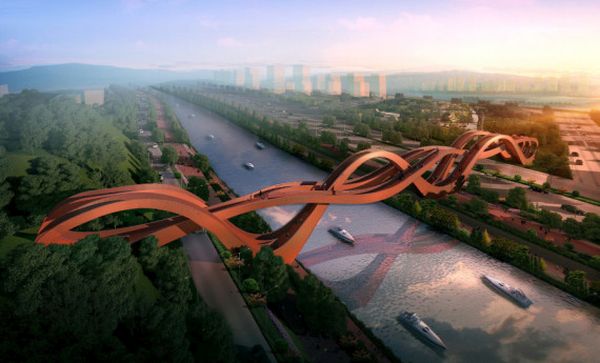
Hypontic Bridges aim to function as pedestrian bridge in China. The impressive design of the bridge comprises of three swirling lanes made in wavy pattern hanging in the air over the landscape of Changsha. However, the bridge is under construction and the design indirectly represents the Chinese knot from Chinese folk art.
2. Sky-Terra Towers Sprout Cities in the skies

In the developing world, population is increasing day by day, and placing greater stress on urban areas. It has become difficult to live in cities where pollution has destroyed the environment. To solve this problem, San Francisco based designer Joanna Borek-Clement has proposed a design of Sky Terra Towers that are not a single building, but interconnected towers. The inspiration of this design came from the neuron cells. Nevertheless, these sky-terra are superstructures that give a new city layer including parks, fields, public pools, and bathhouses.
3. Green Power plants

As we know, power plants are the main source of pollution with a large amount of discharge of pollutants. The level of carbon dioxide in the atmosphere is steadily increasing, mainly due to power plants. The architectural firm named AZPA has come up with a solution to this problem. Recently, the firm is planning to change the Wedel Vattenfall by wrapping the structure of the power plant arranged in a parallel pattern. This layer of plants will absorb the carbon dioxide produced by power plant.
4. Dynamic, wind powered rotating tower
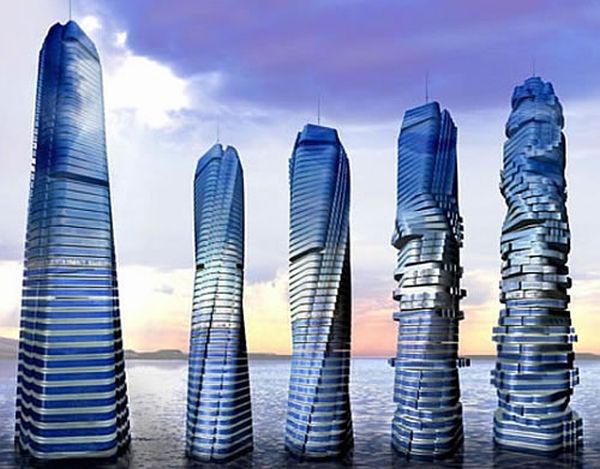
The dynamic wind powered rotating tower will be built in Dubai. The tower will consist of 70 stories. The tower will have a height of 400 meters, and prefabricated materials will be used liberally in its construction. As most of the skyscrapers face a lot of problem caused by wind, this tower will be specially equipped to handle wind currents. Turbines will be installed between floors, which will use the wind and supply power to the building. Photovoltaic solar panels producing solar energy will be installed on the roof of each floor will provide the power to the floor for rotation.
5. Indoor parks

In today’s, rat race life where we have no time for ourselves we look for a place where we do not have to travel long distances. Designers Diller Scofidio and Renfro proposed design of indoor parks in Russia that will feature four landscape typologies, namely steppe, forest, wetland,and tundra with the option to control the climate conditions withstanding the Russia’s extremes winters. Not only this, there will also be an option to control day and night in the parks.
6. Anti Smog
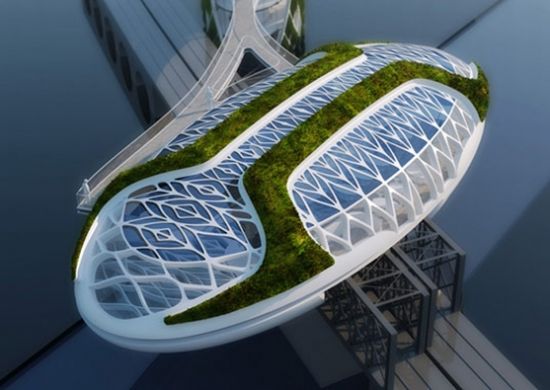
Winner of the Architectural Record Award for Emerging Architecture, the Anti Smog Eco Boulevard from Vincent Callebaut is centered around a elliptical structure called the Solar Drop Tower which consists of 250 square meters of photo-catalytic panels. The panels have a coating of Titanium Oxide which reacts with smog and ruptures it into small particles and dissipates it.
Solar Drop also recycles rainwater from the roof of the green space for use inside the building. The second component of the project is a Wind Tower which is a spiral art gallery and houses a green roof on top of it. The outer surface of the Wind Tower consists of plants and Vertical Axis Wind Turbines (VAWT) that helping taking advantage of local winds for power generation. Anti Smog joins the trend of architectural projects in many major cities of the world which are looking to promote urban ecosystems along with environmental conservation and recycling of energy.
Summary
An architect who can bring the best of nature along with gigantic structures with distinctive designs can bring a new evolution in the field of architecture. The modern age requires new construction to be innovative, functional, and environmentally friendly.


